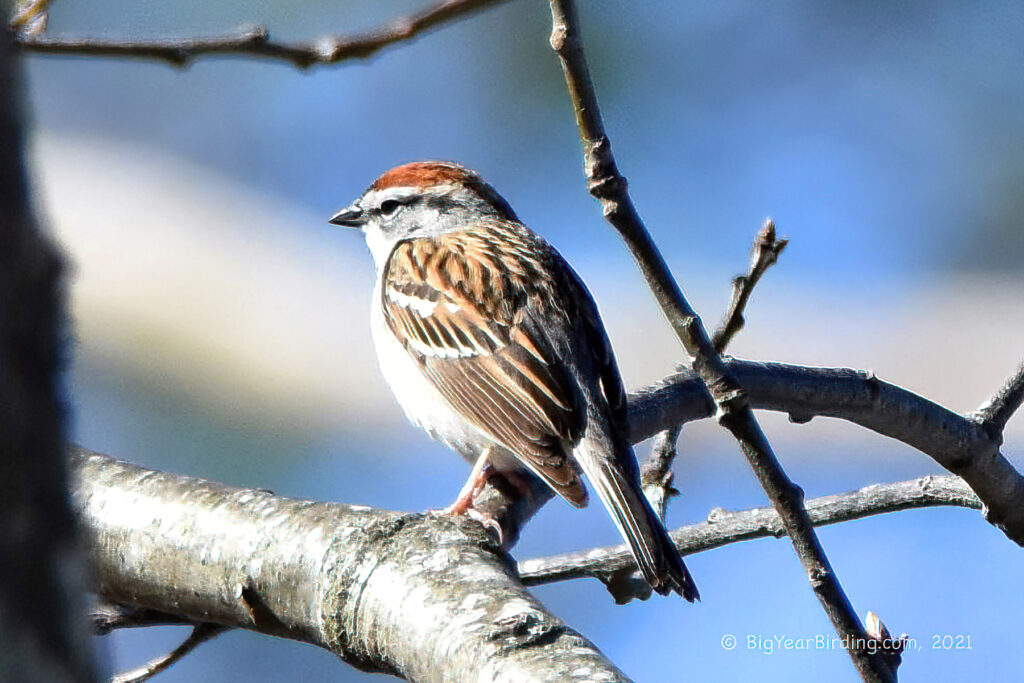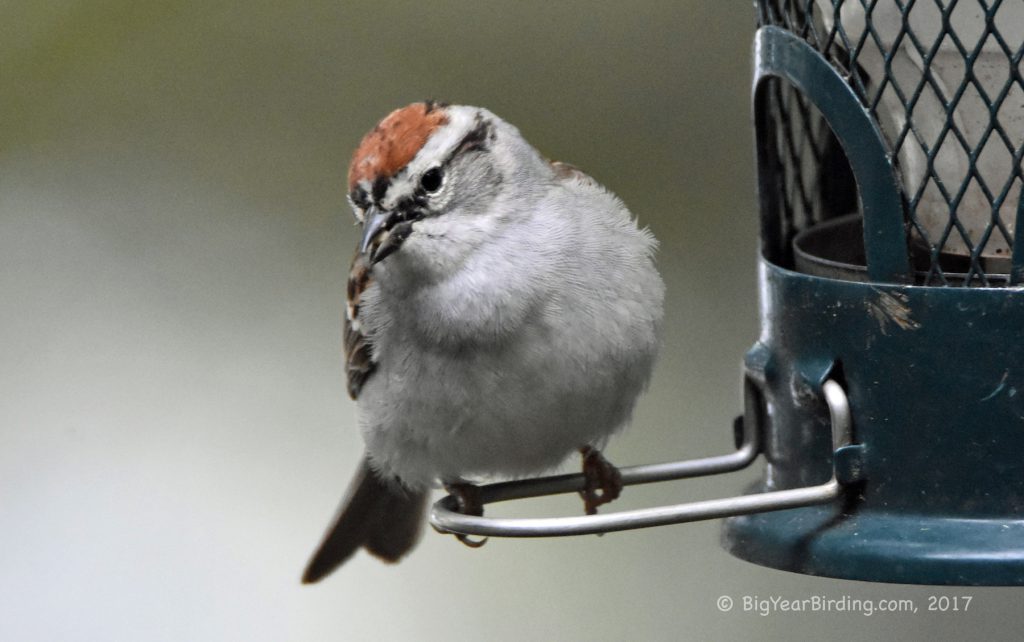
The chipping sparrow is a small, passerine bird that can be found throughout North America. They measure about 5.5 inches in length and weigh approximately 0.4 ounces, making them one of the smallest species of sparrows in the region. Their plumage is a mix of brown, black, and gray, with a rusty cap on their heads that helps distinguish them from other small brown birds.

The chipping sparrow’s most distinguishing field mark is its distinctive, trilling song. During the breeding season, males sing to establish their territories and attract mates. Their song is a series of high-pitched, rapid trills that sound like a sewing machine. In addition to their song, they can also be identified by their thin, pointed bill and dark eye stripe that runs through the eye and down the side of their head.
Chipping sparrows are migratory birds, spending their summers breeding in Canada and the northern United States, and then migrating south for the winter to Central America and northern South America. Their migration route takes them along the eastern and central flyways, and they can be found in a variety of habitats, including forests, woodlands, and suburban areas with trees and shrubs.
During the breeding season, chipping sparrows build cup-shaped nests out of grass, twigs, and other materials, typically in trees or shrubs. They lay 3-5 eggs that are white or pale blue, speckled with brown or gray. After about two weeks of incubation, the chicks hatch and are fed by both parents until they fledge and leave the nest at about two weeks of age.

While chipping sparrows are not considered threatened or endangered, their populations have declined in some areas due to habitat loss and fragmentation. By providing bird-friendly landscaping with native plants and reducing pesticide use, individuals can help support chipping sparrows and other bird species in their local communities.

